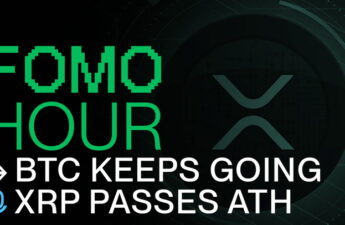The crypto ecosystem has spent over a decade proving it can disrupt the status quo as crypto and blockchain technologies like cryptocurrencies, nonfungible tokens (NFTs), and blockchain-based games go head-to-head against their mainstream counterparts.
While Bitcoin (BTC) has managed to shoulder its way closer to mainstream adoption, the same cannot be said for other crypto subsectors. In the gaming world, blockchain games were afforded hype and passion similar to their mainstream competitors over the years.
However, challenging the status quo of an established industry is no easy feat. As a result, the blockchain gaming industry is tasked with delivering everything mainstream games offer, exceeding gamers’ expectations with new features and experiences.
Considering the potential of crypto innovations to disrupt the mainstream, the crypto community has not given up on GameFi — the fusion of gaming and finance. Building on the foundation laid by crypto entrepreneurs, mainstream gaming veterans have taken up the challenge to deliver a highly-anticipated comeback for the blockchain gaming industry.
For over 25 years, Peter Bergstrom worked at mainstream gaming publishers, including Microsoft Game Studios and Sony Interactive Entertainment. As a producer of Age of Empires, he saw what it takes for a game to make an impact across generations. Bergstrom has now stepped into the Web3 world to help bring blockchain gaming up to par with traditional video games.
In an interview with Cointelegraph, Bergstrom dives into the factors that make or break a game title. He shares his take on why blockchain games haven’t taken off, and what needs to be done to change that.
Cointelegraph: Despite evident setbacks over the years, both gamers and capital investors continue to bet big on the success of blockchain gaming and the GameFi ecosystem. Looking back and comparing it to the traditional gaming industry, what do you think is missing? Is there a need for rebuilding the ecosystem from scratch, or can we build on the existing winning formula known to the gaming industry for decades?
Peter Bergstrom: The traditional game business has had decades to invent and fine-tune what players find exciting:
A compelling challenge and conflict The balance between player strategy and how to deal with chance events Aesthetics Compelling themes and story Rewards that are not just money based
The GameFi ecosystem has not had time to come close to making items 1–4 compelling or competitive with traditional games. In regard to rewards, it seems GameFi has primarily relied on earning money/crypto and little else — very complex systems and not compelling to many players.
Besides, there are no GameFi publishers that can come close to competing with the online (or retail) distribution systems of iOS, Android, Steam, Xbox, Playstation and Nintendo. Additionally, too little effort has been made to make onboarding to a GameFi game user-friendly or to play the game easy. Ease of use has largely been ignored.
CT: Will mainstream titles eventually make their way into blockchain/Web3 gaming?
PB: Eventually, AAA game developers will integrate Web3 […] and make hit titles. By using non-traditional forms of distribution, perhaps through evolved social media, a new artificial intelligence (AI)-driven distribution platform, or an acquisition of an established Web2 publisher — Web3 gaming will eventually find a solid audience
CT: In your experience working for one of the most iconic titles — Age of Empires (AOE) — what was the most crucial factor that helped the AOE franchise develop a relationship with fans and gamers that spans generations?
PB: Age of Empires was and is great because you were allowed to choose your own pace of gameplay. The games begin with you expanding a civilian populace; then, you build a military force to protect them, expand the civilian populace to support the military, and gradually build your empire over the course of a match. Some Age of Empires skirmishes can last for hours because the series places more control in your hands by giving you more options, which results in a slower, more considered and strategic play style.
Age of Empires games come in three basic modes: single-player campaign, single-player skirmish and multiplayer. The campaign and skirmish modes are all about playing against the computer and trying to win a scenario. Multiplayer is a more frantic affair because players are craftier and focused more on total military domination than the computer.
Screenshot of Age of Empires Definitive Edition. Source: PCGamer
In Age of Empires, you can win peacefully by building and defending a wonder, like the Great Pyramid or the Colosseum, keeping it standing for 5–10 minutes, or by capturing relics, artifacts, and ruins and holding them for a set period of time. These win conditions have a lot in common with games like Civilization, emphasizing more than just military dominance.
CT: What’s more important for mass adoption — a good gaming experience or more rewards?
PB: Both — There are no black-and-white answers in game design. What makes the game business so successful is that brilliant game designers continually design new and different ways of gameplay and incorporate this into the rest of what’s already there seamlessly. This will surely happen with GameFi Web3 games as well. Not everything will happen at once but a little at a time by different game designers and developers.
CT: Many believe that gameplay, not payments, attracts gamers. Who is the primary target audience for the GameFi industry — crypto investors, gamers, or both?
PB: Obviously, gamers are the primary target — GameFi is about adding a new dimension of compelling gameplay to Web2 games. Crypto investors are the new Web3 financiers of games, venture capitalists (VC) and individual investors alike — as opposed to the traditional Web2 publishing funding model that is primarily controlled and monopolized by large tech companies.
CT: What are your thoughts on the claim that, unlike NFTs, the GameFi ecosystem has lower dependence on the price of cryptocurrencies?
PB: Because the GameFi tokens and its ecosystem is part of a proven business model that has experienced growth for 35 years, there are 3.09 billion gamers globally, generating $185 billion as of 2022. Some of these gamers will likely become early adopters of Web3 gaming (as we already have seen in the Philippines with Axie Infinity). Even a 1% slice of the game business amounts to 31 million players. Most business analysts look at the huge consumer installed base and likely incorporate that in their investment recommendations — thus incentivizing investors where they should put their investments.
CT: In your experience, what can blockchain games do to mend their reputation and come up to par with mainstream publishers?
PB: Players don’t care about the technology behind a good game. Drop the blockchain/NFT/play-to-earn (P2E)/metaverse/Web3 talk. Make a good game and invisibly incorporate blockchain, NFTs, play and earn, AI, G5, or whatever to make a better game, and gamers will buy. They don’t care if it’s a Unity or Unreal engine in the game — as long it’s a good game. They just want to have an entertaining playing experience — not a science lesson.
CT: What is the fastest way to GameFi adoption — Mobile, PC, consoles, virtual reality (VR)? And what does the full potential of GameFi look like to you?
PB: When it comes to expedited GameFi adoption, PC takes the cake because it is the least monopolized by tech giants that oppose Web3 gaming. It is also not hardware sales-dependent like VR. However, your guess is as good as mine when it comes to predicting the future. That is for our brilliant game designers and developers out there to create.
CT: Finally, what is your advice for the GameFi ecosystem entrepreneurs and developers?
PB: After the investment boom in 2021 and 2022, 2023 is about cutting costs and lengthening your financial runway, then building your game and inventing new, more attractive solutions to the gameplay while you wait for the VC money to reappear. Also, network for connections, alliances and partnerships with companies that are synergistic for you in your space. Exchanges, Tier 0,1,2,3 blockchains, metaverse builders, avatar plugins, Web3 game publishers, middleware providers etc., and, of course, never stop looking, and make friendly contacts with VCs and other investors.
Bergstrom ended the discussion by highlighting that gaming will be the single biggest consumer application of blockchain in 2023, bar none — given the size of the total gaming market and current momentum.



